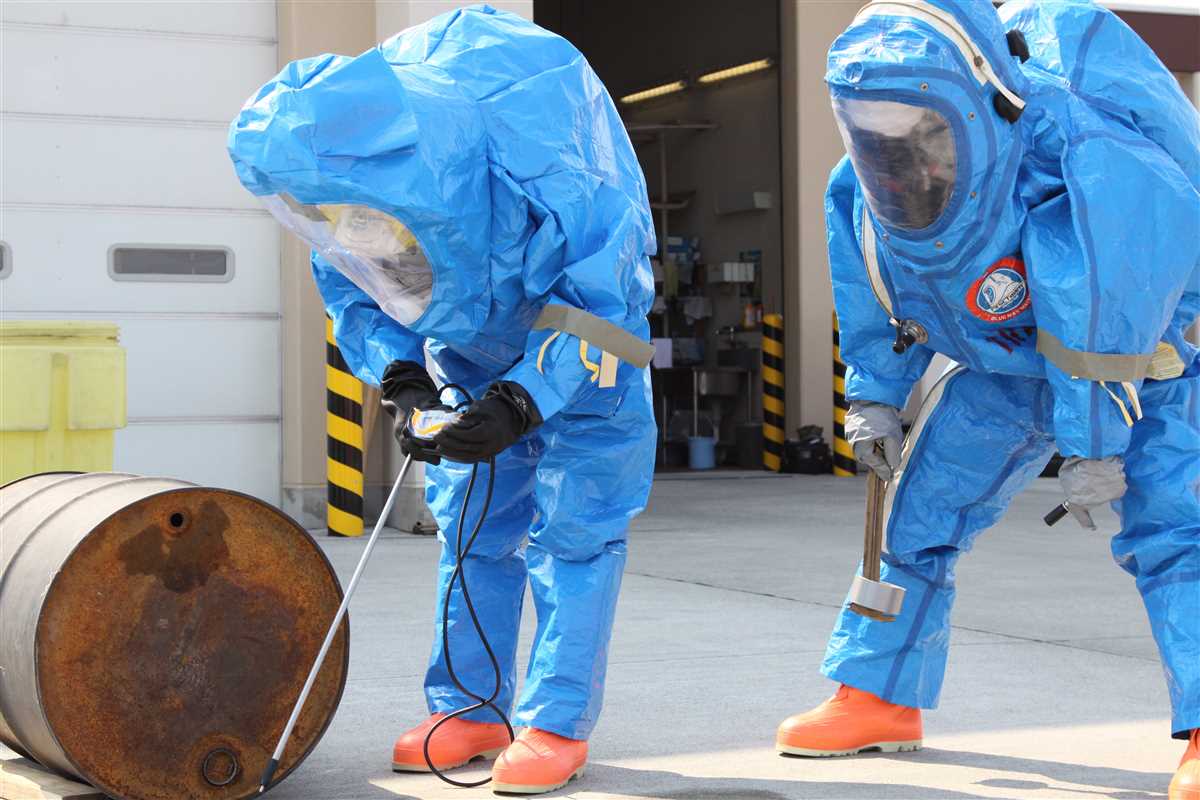
Hazardous materials are substances or materials that pose a risk to the environment or human health. They can be found in various forms such as liquids, gases, or solids. These materials can have harmful effects if not handled or disposed of properly.
There are numerous types of hazardous materials, each with its own set of risks and proper handling procedures. Some common examples include flammable liquids, corrosive materials, toxic substances, and radioactive materials. Understanding the hazards associated with these materials is crucial in order to prevent accidents, injuries, and environmental pollution.
This article aims to provide answers to common questions about hazardous materials. It will cover topics such as the classification and labeling of hazardous materials, the importance of proper storage and handling, emergency response procedures, and regulations governing the transportation and disposal of hazardous materials.
An Overview of Hazardous Materials
Hazardous materials, also known as hazardous substances or dangerous goods, are substances that pose a risk to health, safety, property, or the environment. These materials can be found in various forms, including solids, liquids, gases, and even biological agents. They can be classified into different categories based on their characteristics and potential hazards.
There are many reasons why hazardous materials are a concern. They can cause immediate harm through contact, inhalation, or ingestion, or they can have long-term health effects. They can also lead to fires, explosions, or chemical reactions that release toxic gases or pollutants into the air, water, or soil. Understanding the risks and proper handling procedures for hazardous materials is crucial for ensuring the safety of individuals, communities, and the environment.
Classification of Hazardous Materials
Hazardous materials can be classified based on their physical and chemical properties, as well as their potential to cause harm. The Globally Harmonized System of Classification and Labelling of Chemicals (GHS) provides a globally recognized framework for classifying hazardous materials. GHS divides hazardous materials into different classes, such as flammable liquids, corrosive substances, toxic substances, and explosives.
Regulations and Safety Measures
Due to the potential dangers associated with hazardous materials, there are strict regulations and safety measures in place to govern their handling, storage, transportation, and disposal. These regulations vary by country and are enforced by various government agencies, such as the Occupational Safety and Health Administration (OSHA) in the United States or the European Chemicals Agency (ECHA) in Europe.
It is important for individuals who work with hazardous materials, such as emergency responders, lab technicians, or chemical plant operators, to receive proper training and follow established safety protocols. This includes wearing appropriate personal protective equipment, ensuring proper ventilation, and using specific handling procedures to minimize the risks posed by these materials.
Conclusion
In conclusion, hazardous materials are substances that can cause harm to humans, animals, and the environment. They can be found in various forms and are classified based on their potential hazards. Proper classification, handling, and disposal of hazardous materials are essential for minimizing the risks they pose and ensuring the safety of everyone involved.
Main Types of Hazardous Materials
There are several main types of hazardous materials that pose a threat to human health and the environment. Understanding these types is crucial for implementing proper safety measures and handling protocols.
Chemical Hazards: Chemical hazards include substances that can cause harm or damage when exposed to humans or the environment. This category encompasses various materials such as flammable liquids, corrosive chemicals, toxic substances, and reactive compounds.
Biological Hazards: Biological hazards involve organisms or substances derived from living organisms that can cause harm. These include bacteria, viruses, fungi, parasites, and toxins. Biological hazards can pose health risks through direct contact, ingestion, inhalation, or injection.
Radiological Hazards: Radiological hazards refer to materials that emit radiation, such as radioactive isotopes and nuclear materials. Exposure to these materials can result in severe health effects, including radiation sickness, organ damage, and an increased risk of cancer. Special precautions are necessary when handling radiological materials.
Physical Hazards: Physical hazards are non-chemical substances or factors that can cause harm through their physical properties. This category includes materials such as flammable and combustible substances, explosives, compressed gases, and materials with high levels of pressure or temperature. Physical hazards can lead to fires, explosions, and other dangerous situations.
- Environmental Hazards: Environmental hazards include materials that can harm the environment, such as pollutants, hazardous waste, and substances with long-lasting effects on ecosystems. These hazards can contaminate soil, water, and air, and have detrimental impacts on wildlife, plants, and humans living in the affected areas.
- Combination Hazards: Combination hazards refer to materials that exhibit a combination of different types of hazards. For example, a substance may be both toxic and flammable, posing a dual risk to health and safety.
It is important to identify and categorize hazardous materials correctly to ensure appropriate measures are taken to prevent accidents, reduce exposure, and minimize the impact on human health and the environment. Proper training, labeling, and storage practices are essential for dealing with hazardous materials effectively.
Liquids
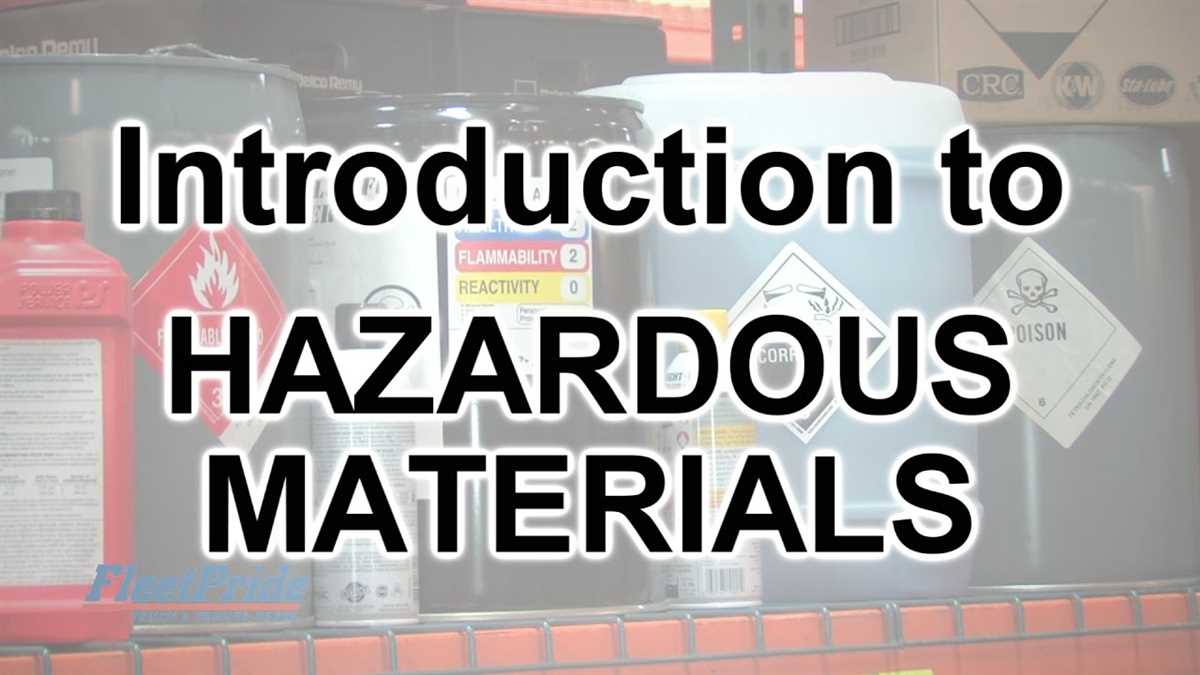
Liquids are one of the three physical states of matter, alongside solids and gases. Unlike solids, which have a fixed shape and volume, liquids have a definite volume but take the shape of their container. They flow easily and can be poured, making them useful in various applications.
One characteristic of liquids is their ability to change temperature and turn into gas through a process called evaporation. The rate of evaporation depends on factors such as temperature, surface area, and the presence of vapor pressure. It is important to handle volatile liquids with caution as they can release toxic fumes.
There are different types of liquids, including flammable and combustible liquids. Flammable liquids have a flash point, which is the lowest temperature at which they can ignite when exposed to an open flame. Combustible liquids, on the other hand, have a higher flash point but can still ignite under certain conditions.
When dealing with hazardous materials, it is essential to properly store and handle liquids to prevent accidents and minimize the risk of exposure. This includes storing them in approved containers, ensuring proper ventilation, and using appropriate personal protective equipment.
In conclusion, liquids are an important aspect of hazardous materials, and understanding their characteristics and proper handling is crucial for maintaining safety in various industries and settings.
Solids
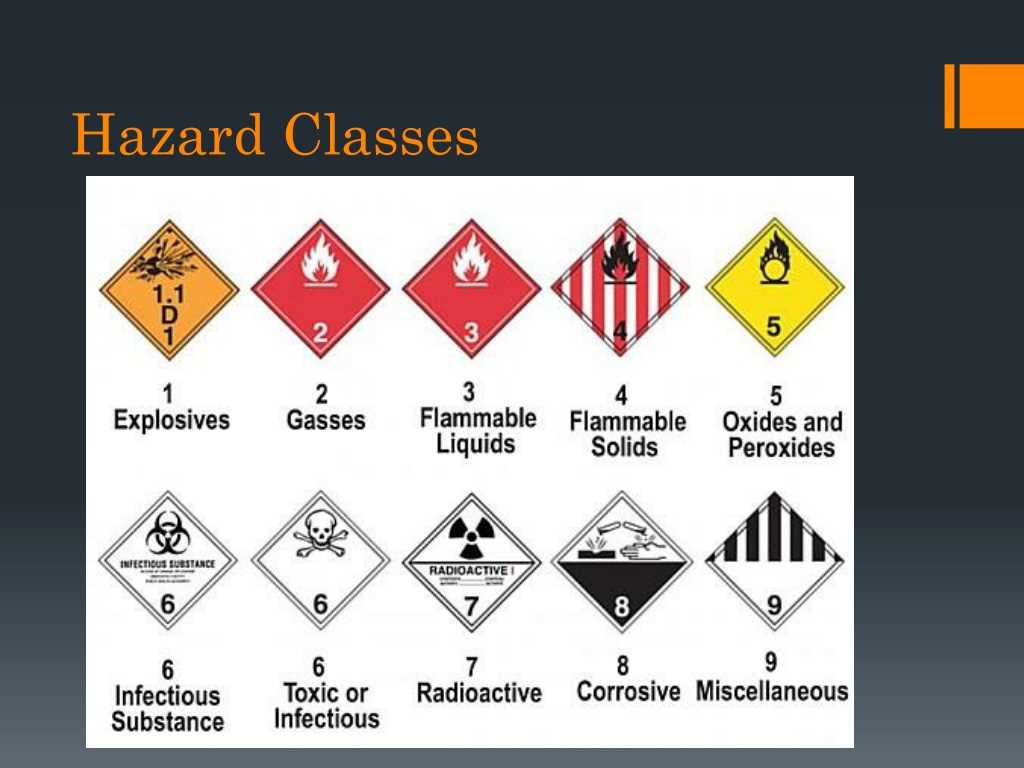
Solids are one of the three main states of matter, along with liquids and gases. They have a definite shape and volume, and their particles are tightly packed together. Solids can be classified into different categories based on their properties and composition.
Metals are a type of solid that are characterized by their high conductivity, luster, and malleability. They are typically found in a solid state at room temperature, although some metals like mercury are liquid at room temperature. Metals are widely used in various industries for their strength and durability.
Minerals are another type of solid that are naturally occurring substances with a specific chemical composition and crystal structure. They are found in rocks and are a major source of valuable resources such as metals, gemstones, and industrial minerals.
- Gemstones are minerals that are prized for their beauty and rarity. They are often used in jewelry and have high economic value.
- Ores are minerals that contain valuable metals or elements. They are extracted from the earth and processed to obtain the desired metal.
- Rocks are aggregates of minerals and can be classified into various types such as igneous, sedimentary, and metamorphic rocks.
Ceramics are another category of solids that are made from inorganic materials, such as clay and porcelain. They are known for their high melting points and are commonly used in the production of pottery, tiles, and other decorative items. Ceramics can also have industrial applications, such as in the construction of heat-resistant materials and electrical insulators.
Polymers are another type of solid that consist of long chains of repeating units. They can be natural or synthetic and have a wide range of properties depending on their composition and structure. Polymers are used in various industries, including packaging, textiles, and plastics manufacturing.
In conclusion, solids are a diverse category of matter with a wide range of properties and applications. Understanding the characteristics of different solids is important for managing and handling hazardous materials safely.
Gases
Gases are one of the three main forms of hazardous materials, alongside liquids and solids. They are substances that are present in a vapor or gaseous state at normal room temperature and atmospheric pressure. Gases can be invisible, colorless, and odorless, making them particularly dangerous as they may go undetected.
One of the key characteristics of gases is their ability to easily expand and fill a container or an enclosed space. They can quickly disperse in the air, making them difficult to control or contain. This property makes it essential to have proper ventilation systems and monitoring devices in place when handling or working with hazardous gases.
Hazardous gases can pose various risks, such as flammability, toxicity, and asphyxiation. Flammable gases can ignite or explode in the presence of an ignition source, leading to fires or explosions. Toxic gases can cause harm or even death when inhaled or come into contact with the skin. Asphyxiant gases, on the other hand, can displace oxygen and lead to suffocation or respiratory distress.
Some common examples of hazardous gases include hydrogen sulfide, chlorine, ammonia, carbon monoxide, and propane. Each of these gases has its distinct properties and poses different risks. It is crucial for individuals working with or near hazardous gases to be knowledgeable about the specific hazards and proper safety procedures to mitigate the risks associated with their handling or exposure.
Risks and Dangers Associated with Hazardous Materials
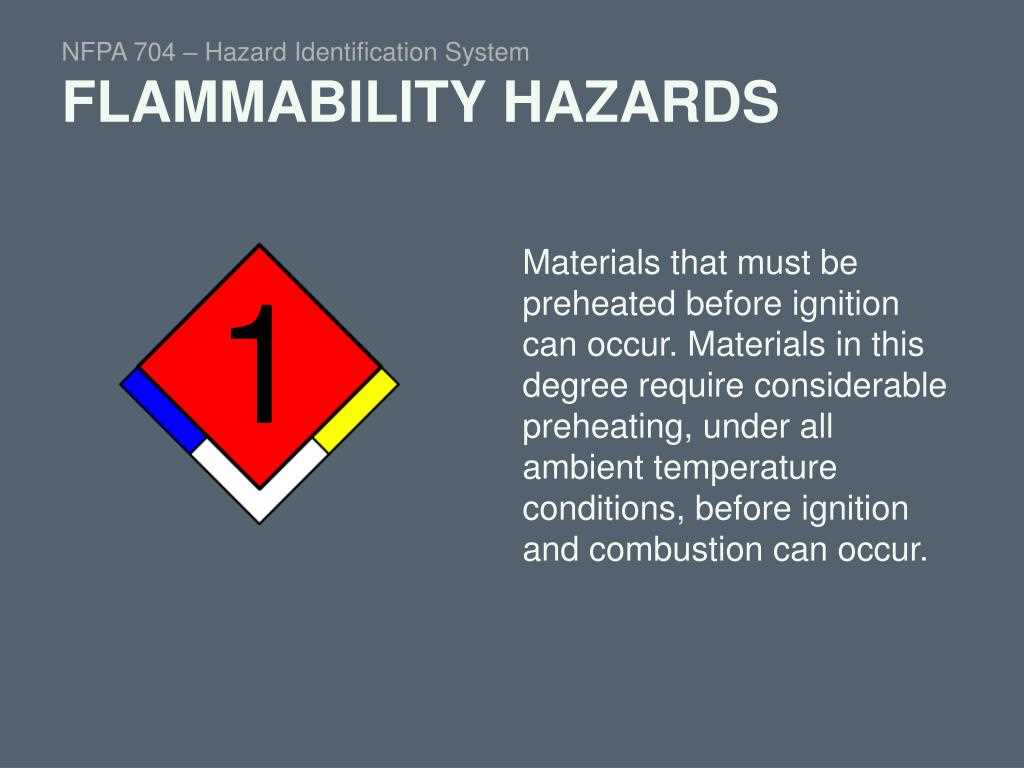
Hazardous materials pose various risks and dangers to both the environment and human health. These materials, which can be in the form of liquids, gases, or solids, have the potential to cause fires, explosions, and toxic exposures that can result in serious injuries, illnesses, and even death.
One of the primary risks associated with hazardous materials is their flammability. Many chemicals and substances used in industrial processes or stored in facilities are highly flammable and can easily ignite when exposed to heat, sparks, or flames. These fires can rapidly spread and cause widespread damage, posing a significant risk to property, the environment, and the surrounding communities.
In addition to the risk of fires, hazardous materials can also be reactive, meaning they can undergo chemical reactions that release heat, gas, or other byproducts. These reactions can result in explosions, which can have devastating consequences, destroying infrastructure, causing widespread damage, and endangering lives.
Hazardous materials also present dangers in terms of their toxicity. Many chemicals used in industrial processes, such as solvents, pesticides, and heavy metals, are toxic to human health. Exposure to these substances can lead to various acute or chronic illnesses, including respiratory problems, neurological disorders, and even cancer. The release of hazardous materials into the environment, such as water sources or the atmosphere, can also have long-term effects, contaminating ecosystems and harming wildlife.
To effectively manage the risks associated with hazardous materials, it is crucial for industries and organizations to implement appropriate safety measures. This includes proper storage, handling, and transportation procedures, as well as the use of personal protective equipment. Preventive measures, such as conducting risk assessments and implementing emergency response plans, are also essential in mitigating the potential dangers these materials pose.
Summary:
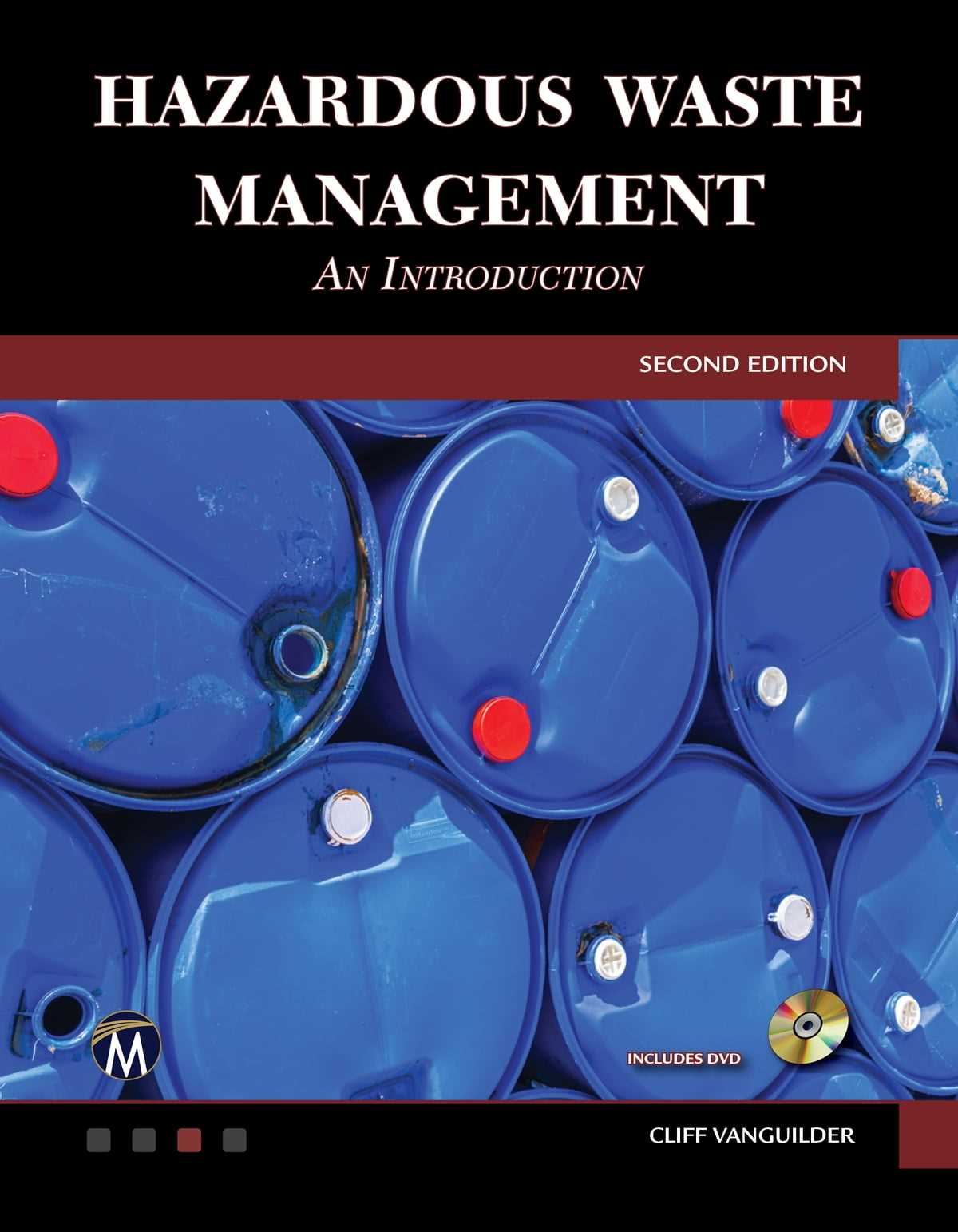
- Hazardous materials pose risks of fires, explosions, and toxic exposures.
- They can be highly flammable and reactive, leading to rapid spread of fires and explosions.
- Hazardous materials can be toxic to human health, causing various illnesses and long-term environmental damage.
- Proper safety measures, including storage, handling, and transportation procedures, are necessary for risk management.
- Preventive measures, such as risk assessments and emergency response plans, are crucial in mitigating hazards associated with hazardous materials.
Handling and Storage of Hazardous Materials
When it comes to handling and storage of hazardous materials, it is important to follow strict safety protocols to minimize the risk of accidents and protect both workers and the environment. Proper handling and storage practices can help prevent leaks, spills, fires, and explosions that may result from the mishandling of hazardous materials.
1. Identification and labeling: The first step in safely handling and storing hazardous materials is to properly identify and label them. Each hazardous material should be clearly labeled with its specific name, hazard class, and any additional handling instructions. This helps ensure that workers are aware of the potential risks associated with each material and can handle them accordingly.
2. Segregation: It is essential to segregate different types of hazardous materials to prevent incompatible substances from coming into contact with each other. This can help prevent chemical reactions and potential hazards. Segregation should be done based on the compatibility of materials, as outlined in the Hazard Communication Standard (HCS).
3. Storage containers: Hazardous materials should be stored in appropriate containers that are specifically designed to safely contain and transport them. These containers should be made of materials that are compatible with the stored material, and they should be tightly sealed to prevent leaks and spills. Additionally, containers should be labeled with the contents and hazard information.
4. Adequate ventilation: Proper ventilation is crucial when handling and storing hazardous materials. Adequate airflow helps dissipate any potential vapors or fumes that may be released, reducing the risk of exposure to harmful substances. Ventilation systems should be regularly inspected and maintained to ensure their effectiveness.
5. Emergency response plan: In the event of an accident or spill involving hazardous materials, it is essential to have an emergency response plan in place. This plan should outline the necessary steps to take in case of an incident, including evacuation procedures, reporting protocols, and the use of personal protective equipment.
By following these guidelines, individuals can minimize the risks associated with handling and storing hazardous materials. Safety should always be a top priority to protect both human health and the environment.
Conclusion
Hazardous materials are substances or articles that pose a risk to health, safety, property, or the environment. It is essential to have laws and regulations in place to govern the transportation, handling, and storage of hazardous materials to ensure public safety and environmental protection.
The Importance of Laws and Regulations
Laws and regulations governing hazardous materials serve several crucial purposes. Firstly, they establish clear guidelines and standards for the safe transportation, handling, and disposal of hazardous materials. These guidelines help to prevent accidents, reduce the risk of exposure, and minimize the potential harm to individuals and the environment.
Additionally, laws and regulations provide a framework for accountability and responsibility. They require businesses and individuals involved in the transportation, storage, and disposal of hazardous materials to adhere to specific safety protocols and maintain appropriate documentation. This accountability helps to ensure that those responsible for handling hazardous materials do so in a responsible and safe manner.
The Role of Government and Regulatory Agencies
The responsibility for creating and enforcing laws and regulations governing hazardous materials falls primarily on government bodies and regulatory agencies. These agencies, such as the Occupational Safety and Health Administration (OSHA) and the Department of Transportation (DOT), play a vital role in establishing and monitoring compliance with these regulations.
Government and regulatory agencies also oversee the licensing and certification of individuals and organizations involved in hazardous materials handling. This process ensures that those who work with hazardous materials possess the necessary knowledge and training to do so safely.
Ongoing Challenges and Future Developments
As the world continues to evolve, the field of hazardous materials management faces ongoing challenges. These challenges include keeping up with advancements in technology, addressing emerging risks, and adapting to new environmental concerns. It is crucial for laws and regulations to continuously evolve to meet these challenges and ensure the safety of individuals and the environment.
In the future, we can expect to see increased focus on sustainable practices and the reduction of hazardous materials used in various industries. Stricter regulations may be enacted to limit the production and use of certain hazardous substances, promoting safer alternatives and minimizing the risk to human health and the environment.
Conclusion
In conclusion, laws and regulations governing hazardous materials play a vital role in ensuring public safety and environmental protection. They establish standards, provide accountability, and are enforced by government and regulatory agencies. As the world changes, these laws and regulations will need to evolve to address new challenges and promote sustainable practices. By adhering to these laws and regulations, businesses and individuals can contribute to a safer and more sustainable future.